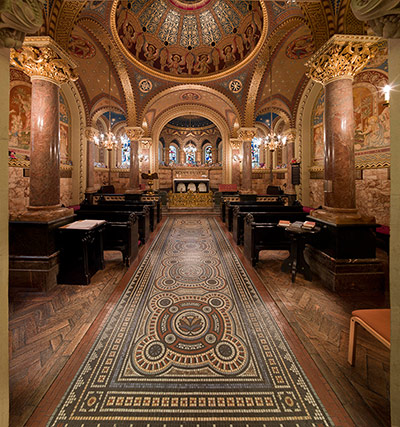The Byzantine period was from 330-1453 CE. During this time, the Byzantine Empire was the longest political entity in European history. It was associated with the Eastern culture and influence by the Greeks and Orient. Constantinople became the capital of Roman empire which is current day Istanbul. The basilica plan changed to a more centralized plan. There was also a new architectural type, Domed Basilica that was a type of construction called pendentives. They were constructed in a way to catch the most sunlight. A famous church during this time was the Hagia Sophia. It was the main cathedral in Constantinople. The central plan included circle windows which gave the massive dome a sense of an importance exterior. This church was known as the church of Holy Wisdom. Byzantine architecture consisted of multiple domes, a central plan including a Greek cross plan, round arches and arcades, mosaics, alternating stone colors or stone and brick. The buildings that remain today are churches and temples. The flooring is tiled in marble, often with geometric designs and the surfaces on the walls or ceilings were ornamented with marble, frescos, mosaics, and alabaster.
Images:


Interior of the Hagia Sophia

Current Applications:


Extra Credit: https://www.youtube.com/watch?v=CdC_1ffEADI




No comments:
Post a Comment